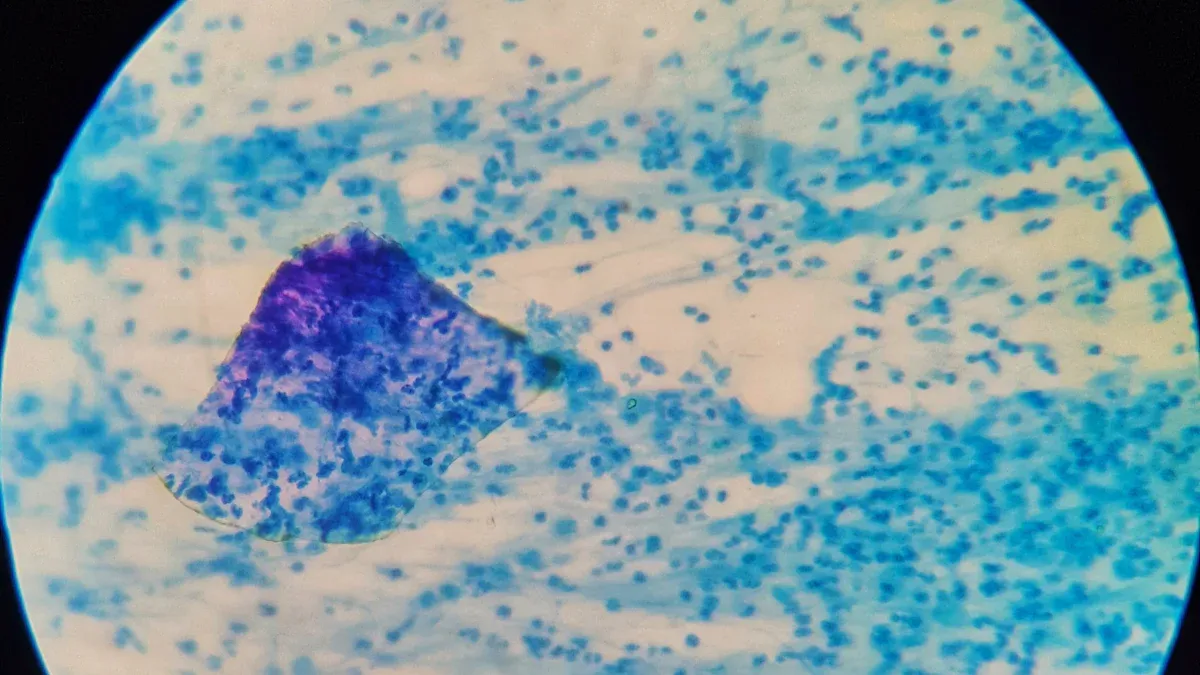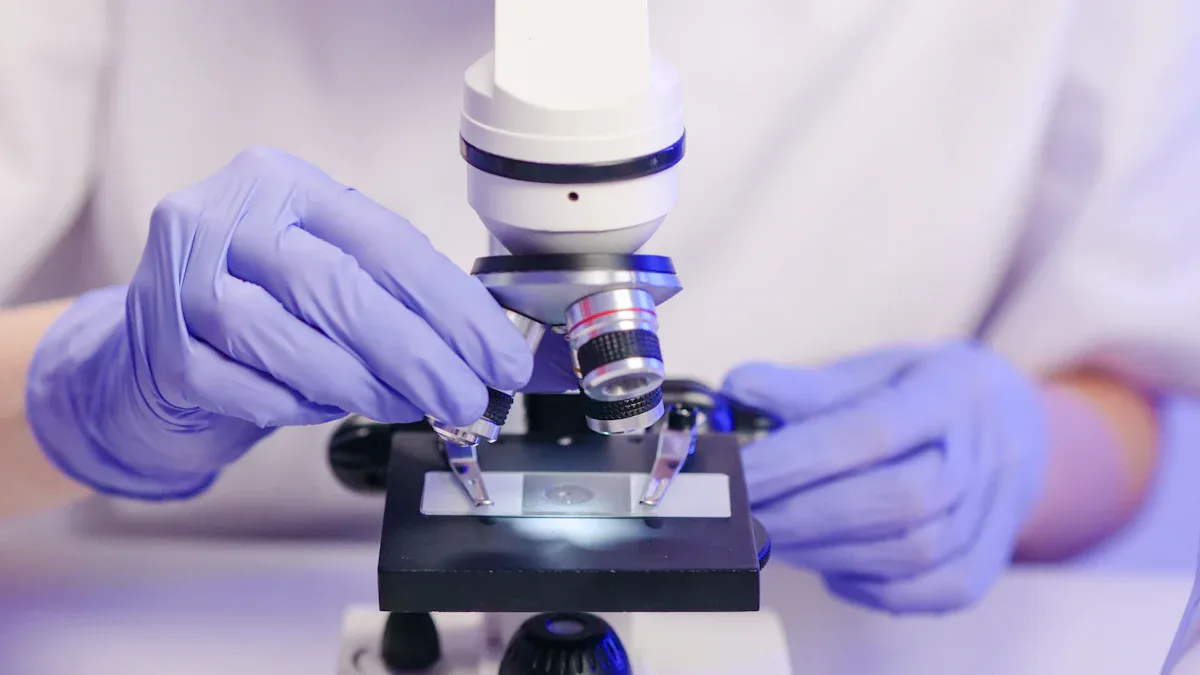How to Understand Your Biopsy and Pathology Reports

Receiving a biopsy or pathology report can feel overwhelming. You might wonder what the terms mean or how the results affect your health. Understanding these reports helps you make informed decisions about your care. Each detail, from the diagnosis to the margins, plays a role in your treatment plan. This guide focuses on breaking down biopsy results: from pathologist to patient, so you can approach your next steps with clarity and confidence.
Key Takeaways
Knowing your biopsy and pathology reports helps you decide on health care. Take time to understand the details.
Ask your doctor questions about the report. Learning terms like tumor grade and margins can help with treatment choices.
Keep a copy of your pathology report. You can look at it later and talk about it with your doctor.
Get a second opinion if you are unsure about your diagnosis. This can help you feel more certain and informed.
Use trusted sources to learn about your report. Good information helps you talk about your care with confidence.
What Are Biopsy and Pathology Reports?

The Purpose of a Biopsy
A biopsy is a medical procedure where a small sample of tissue is removed from your body for examination. Doctors use biopsies to investigate abnormalities, such as lumps or unusual growths, that may indicate disease. This procedure helps determine whether the tissue is healthy, inflamed, or affected by conditions like cancer. For example, core needle biopsies (CNB) are highly accurate, achieving up to 87% accuracy in diagnosing certain cancers. They also allow for quicker diagnoses and faster treatment initiation compared to other methods.
Biopsies can be performed in different ways depending on the area of concern. Some common methods include needle biopsies, surgical biopsies, and endoscopic biopsies. Each method aims to provide a clear picture of what’s happening inside your body, guiding your doctor in making the best decisions for your care.
Understanding a Pathology Report
Once a biopsy is complete, the tissue sample goes to a pathologist. A pathologist is a doctor who specializes in studying cells and tissues under a microscope. They create a pathology report, which is a detailed document that explains their findings. This report includes key information such as the type of tissue examined, its appearance under the microscope, and whether any abnormalities were found.
Pathology reports play a critical role in diagnosing diseases and planning treatments. For instance, the report may describe the tumor grade, which indicates how abnormal the cells look, or the tumor margins, which show whether the entire tumor was removed. These details help your doctor decide on the next steps, such as surgery, chemotherapy, or radiation therapy.
Why These Reports Matter for Diagnosis and Treatment
Biopsy and pathology reports are essential tools in modern medicine. They provide the information needed to confirm a diagnosis and develop a personalized treatment plan. For example, the histologic type of a tumor helps identify the specific kind of cancer, while biomarkers can reveal targeted therapy options. Additionally, details like tumor margins and invasiveness guide decisions about further treatment or additional surgeries.
Studies show that accurate biopsy methods, such as CNB, not only improve diagnosis but also reduce the time it takes to start treatment. This means you can begin addressing your condition sooner, which can lead to better outcomes. By understanding your biopsy and pathology reports, you gain valuable insight into your health and can work with your doctor to make informed decisions.
Breaking Down Biopsy Results: From Pathologist to Patient
Understanding your pathology report can feel daunting, but breaking it down into key sections makes it easier to follow. Each part of the report provides essential details about your diagnosis and guides your treatment plan.
Key Sections of a Pathology Report
Your pathology report contains several important sections. Here’s what each one typically includes:
Section | Description |
|---|---|
Identifying Information | Includes your name, medical record number, date of biopsy or surgery, and sample number. |
Clinical Information | Contains your medical history and any special requests from your doctor, helping the pathologist choose the right tests. |
Gross Description | Describes the physical characteristics of the tissue sample, such as size, color, and texture. It also notes how many tissue cassettes were submitted for analysis. |
Microscopic Description | Details how the cells look under a microscope, including their arrangement and whether they show signs of invasion. |
Diagnosis | Provides the final diagnosis, including the type and grade of any cancer present. This section is critical for determining your treatment options. |
Comment | Offers additional insights or recommendations for further testing. |
Summary | Highlights the findings most relevant to your treatment, following guidelines from the College of American Pathologists (CAP). |
Some reports may also include results from additional tests, such as molecular testing or immunohistochemistry. For example, in breast cancer cases, tests for estrogen and progesterone receptors or HER2/neu status help identify the most effective treatments.
Common Terms Explained
Pathology reports often use medical terms that can be confusing. Here are some common ones explained:
Benign vs. Malignant: Benign means non-cancerous, while malignant refers to cancerous growths.
Tumor Grade and Stage: Grade describes how abnormal the cells look, while stage indicates how far the cancer has spread.
Clear Margins vs. Positive Margins: Clear margins mean no cancer cells were found at the edges of the removed tissue, while positive margins indicate cancer cells are present.
Invasive vs. In Situ: Invasive cancers spread into surrounding tissues, while in situ cancers remain confined to their original location.
Lymphovascular Invasion: This term describes cancer cells found in the lymphatic system or blood vessels, which may increase the risk of spread.
By breaking down biopsy results from pathologist to patient, you can better understand your diagnosis and treatment options. If you’re unsure about any terms or sections, don’t hesitate to ask your doctor for clarification.
Interpreting Your Results

Implications for Diagnosis
Your biopsy results play a crucial role in confirming or ruling out specific conditions. For example, a core needle biopsy can sometimes show discrepancies in diagnosis and grading, which may influence treatment decisions for conditions like high-grade sarcomas. In some cases, a negative biopsy result does not guarantee the absence of disease. This highlights the importance of follow-up tests or additional procedures, such as an incisional biopsy, to ensure accuracy.
Different biopsy strategies also impact diagnostic outcomes. High-density biopsies, like template prostate mapping, increase sensitivity in detecting significant conditions such as prostate cancer. However, reducing the number of biopsies can lower diagnostic accuracy, potentially missing critical findings. Understanding these nuances helps you and your doctor make informed decisions about your health.
Evidence Type | Findings | Implications |
|---|---|---|
Biopsy Strategy | Increased sensitivity in detecting significant prostate cancer | |
Biopsy Reduction | Fewer biopsies reduce diagnostic accuracy | Higher risk of missing clinically significant disease |
Core Needle Biopsy | Discrepancy in diagnosis and grading | May alter therapy decisions for high-grade sarcomas |
Core Needle Biopsy | Follow-up or additional biopsies may be necessary |
Impact on Treatment Options
Your pathology report directly influences your treatment plan. For instance, tumor grade and stage determine whether surgery, chemotherapy, or radiation is appropriate. Biomarkers, such as hormone receptor status in breast cancer, guide targeted therapies. If your report shows clear margins, it means the tumor was entirely removed, reducing the need for further surgery. However, positive margins may require additional treatment to address remaining cancer cells.
Advanced biopsy techniques also impact treatment decisions. Transperineal biopsies, for example, offer high diagnostic performance and safety, especially in challenging areas. Combining strategies, like PSA density and mpMRI, can refine treatment plans by providing a clearer picture of the disease. These insights ensure that your care is tailored to your specific needs.
When to Seek a Second Opinion
Sometimes, seeking a second opinion can provide clarity and confidence in your diagnosis. If you have concerns about your pathology report, consider having your slides reviewed by a consulting pathologist. Many large cancer centers, such as Dana-Farber, offer second-opinion services. Your oncologist or surgeon can also recommend a specialist with expertise in your condition.
Pathologists often consult with colleagues to validate findings before finalizing a report. This collaborative approach ensures accuracy. If your diagnosis remains unclear or you face a complex treatment decision, a second opinion can help confirm the best course of action. Sending your slides to a trusted cancer center’s pathology department is another option for ensuring a thorough review.
Tip: Don’t hesitate to ask your doctor about second opinions. They can guide you to resources that support your decision-making process.
Questions to Ask Your Doctor
When reviewing your biopsy or pathology report, asking the right questions can help you understand your diagnosis and treatment options. Your doctor is there to guide you, so don’t hesitate to seek clarification. Here are some key questions to consider during your discussion:
What does my diagnosis mean? Ask your doctor to explain the findings in simple terms, including whether the condition is benign or malignant.
What is the tumor grade and stage? Understanding these details helps you know how advanced the condition is and what it might mean for your treatment.
Were the margins clear? If you had surgery, this question helps determine if all abnormal tissue was removed or if further treatment is needed.
What additional tests do I need? Some cases require further testing, such as molecular studies or imaging, to confirm the diagnosis or plan treatment.
What are my treatment options? Discuss the benefits and risks of each option, including surgery, chemotherapy, radiation, or targeted therapies.
How urgent is treatment? Knowing the timeline helps you plan and prioritize your next steps.
Should I get a second opinion? Your doctor can recommend specialists or institutions for a second review if you feel uncertain about the results.
Tip: Write down your questions before your appointment. This ensures you don’t forget anything important during the discussion.
By asking these questions, you take an active role in your care. Clear communication with your doctor builds confidence and helps you make informed decisions about your health.
Tips for Navigating Your Pathology Report
Keep a Copy of Your Report
Always request a copy of your pathology report for your records. Having it on hand allows you to review the details at your own pace and refer to it during discussions with your doctor. Many healthcare providers offer access to reports through patient portals. You might even see the results before your doctor has reviewed them. This makes timely communication with your healthcare team essential. If you have questions about the findings, your treating physician can explain the report and its implications for your treatment. You can also ask for a discussion with the pathologist for further clarity.
Keeping a copy ensures you stay informed about your diagnosis and treatment plan. It also helps if you decide to seek a second opinion or consult another specialist. Organized records empower you to take an active role in your care.
Highlight Key Sections for Discussion
Pathology reports can feel overwhelming, but focusing on key sections makes them easier to understand. Highlight areas like the diagnosis, tumor grade, stage, and margins. These sections provide critical information about your condition and guide treatment decisions. For example, knowing whether the margins are clear or positive helps determine if additional surgery or therapy is needed.
When meeting with your doctor, bring your highlighted report and a list of questions. This ensures you address all concerns and fully understand your diagnosis. Effective communication between you and your doctor is vital. Pathologists and clinicians often collaborate to ensure critical diagnoses are accurate and clearly documented. Written communication avoids misunderstandings, but verbal discussions can provide immediate clarity.
Use Trusted Resources for Research
Researching your pathology report can help you understand medical terms and treatment options. Use reliable sources to ensure the information you find is accurate. Trusted resources include the American Cancer Society’s guides, such as "Understanding Your Pathology Report" and the "Cancer Atlas." These resources explain pathology reports in simple terms and provide insights into diagnosis and treatment.
Other helpful tools include glossaries for nonscientists and research podcasts. These resources break down complex topics into understandable language. Exploring reputable websites like the Cancer Statistics Center or attending research events can also deepen your understanding. Staying informed through trusted sources helps you feel more confident when discussing your care with your doctor.
Tip: Avoid relying on unverified online information. Stick to reputable organizations and medical professionals for accurate guidance.
Stay Calm and Seek Support
Receiving a biopsy or pathology report can feel overwhelming. You might experience a mix of emotions, from confusion to fear. It’s important to remind yourself that you are not alone in this journey. Staying calm and seeking support can make a significant difference in how you process the information and move forward.
Here are some steps to help you manage your emotions and find the support you need:
Take a moment to breathe: Give yourself time to absorb the information. Deep breathing exercises or mindfulness techniques can help reduce stress and clear your mind.
Reach out to loved ones: Share your feelings with trusted family members or friends. Talking about your concerns can provide emotional relief and help you feel supported.
Join a support group: Connecting with others who have faced similar situations can be comforting. Many hospitals and organizations offer in-person or online support groups for patients and caregivers.
Seek professional help: If you feel overwhelmed, consider speaking with a counselor or therapist. They can provide strategies to cope with anxiety and uncertainty.
Note: It’s okay to feel scared or uncertain. These emotions are natural, but they don’t have to control your decisions. Taking small steps toward understanding your report and seeking help can empower you.
Remember, your healthcare team is also part of your support system. Don’t hesitate to ask questions or express concerns during appointments. They are there to guide you and ensure you feel confident about your next steps. By staying calm and leaning on your support network, you can navigate this challenging time with strength and clarity.
Understanding your biopsy and pathology reports empowers you to make informed decisions about your health. These reports provide critical insights into your diagnosis and treatment options. Taking the time to review them helps you feel more in control of your care.
It’s normal to feel overwhelmed when reading medical reports. Remember, your doctor is there to guide you through the process.
Ask questions, seek clarification, and don’t hesitate to request a second opinion if needed. By staying informed and proactive, you take an important step toward managing your health with confidence.
FAQ
What should I do if I don’t understand my pathology report?
Ask your doctor to explain the report in simple terms. Highlight confusing sections and bring them to your appointment. You can also request a meeting with the pathologist for further clarification.
Tip: Write down your questions beforehand to ensure you cover everything during the discussion.
Can I access my pathology report online?
Many healthcare providers offer patient portals where you can view your pathology report. Check with your doctor’s office or hospital for access. If you don’t see it online, request a physical copy from your medical records department.
How long does it take to get biopsy results?
Biopsy results usually take 1–2 weeks. Some specialized tests, like molecular studies, may take longer. If you haven’t received your results within this timeframe, contact your doctor’s office for an update.
Should I worry if my report mentions “atypical cells”?
Atypical cells don’t always mean cancer. They could indicate inflammation, infection, or precancerous changes. Your doctor may recommend additional tests or monitoring to determine the cause.
Note: Stay calm and ask your doctor to explain what atypical cells mean in your specific case.
Is it necessary to get a second opinion on my pathology report?
A second opinion can confirm your diagnosis and treatment plan. It’s especially helpful for rare or complex conditions. Ask your doctor for recommendations or send your slides to a specialized pathology center for review.
Reminder: Seeking a second opinion is common and can provide peace of mind.
See Also
A Simple Guide To B-Cell Prolymphocytic Leukemia
Key Characteristics Of Glioblastoma You Need To Know
Essential Features Of Hemangioblastoma You Should Understand
